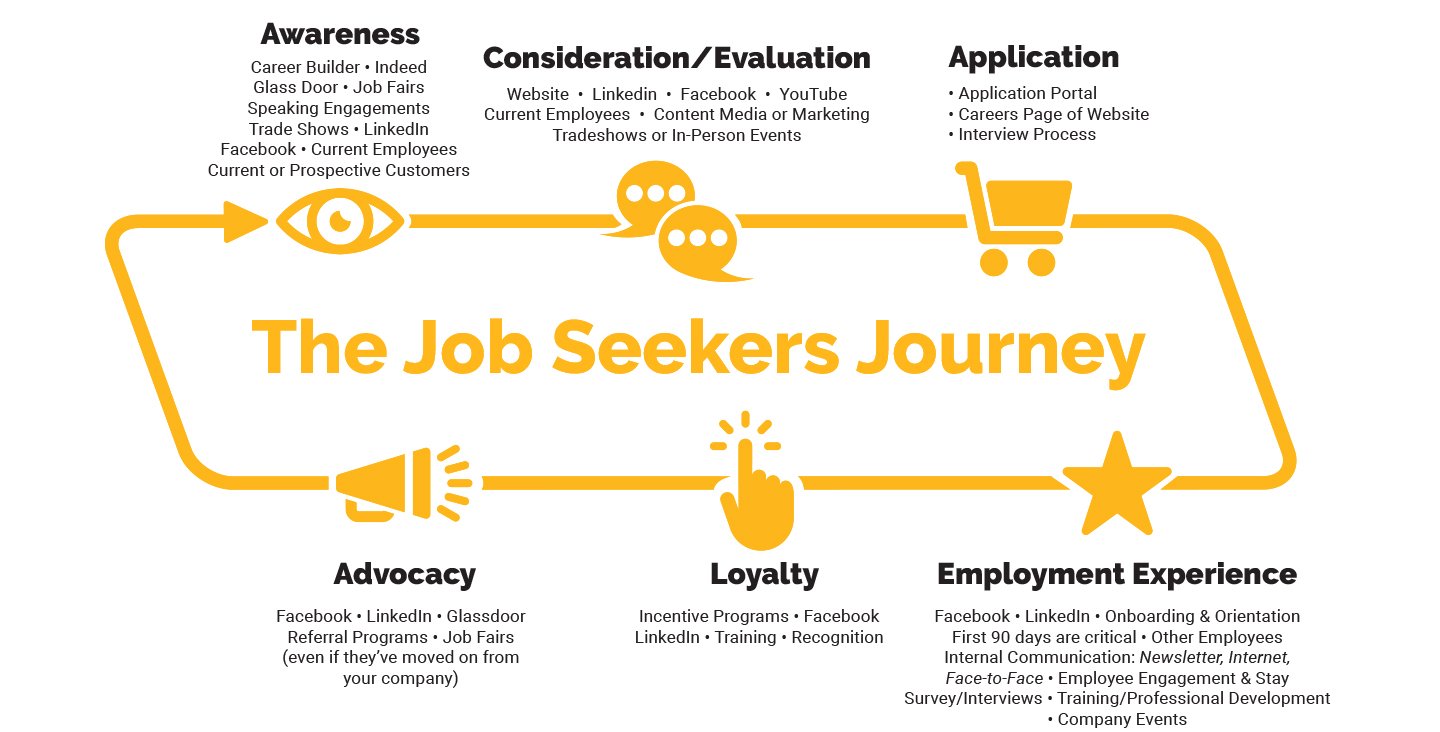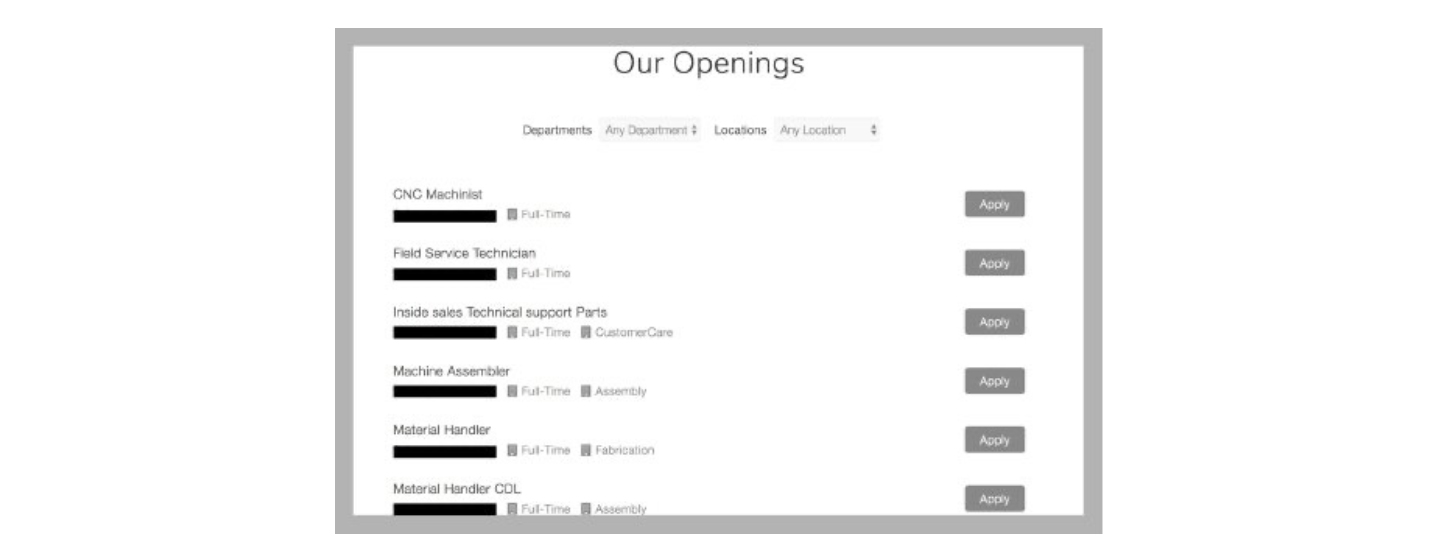Imaginasium | Recruitment Marketing | 6 minute read
Recruit Better People in a Digital World: 6 Ways Manufacturers Can Win Great Employees
Even as the pandemic ebbs, manufacturing is alive and well in the Midwest. According to the National Association of Manufacturers, companies are adding new workers, even as the manufacturing sector is rebounding from the changes that the overall labor market has seen since early 2020.
At the same time, a May 2021 study by Deloitte and The Manufacturing Institute reported that finding the right talent is 36% harder than it was three years ago, even though the unemployment rate has nearly doubled.
“Given the foundational role the manufacturing sector plays in our nation’s economy, it is deeply concerning that at a time when jobs are in such high demand nationwide, the number of vacant entry-level manufacturing positions continues to grow,” said Paul Wellener, Deloitte vice chairman and U.S. industrial products and construction leader.
In all, more than 2 million manufacturing jobs are expected to go unfilled nationally over the next decade – meaning that the optimism that comes with growth is overshadowed by the challenge of filling open positions. And in states like Wisconsin, where unemployment is already very low, manufacturers must focus on how to bring more skilled workers into the state.
So how can you find the right people, for your company’s needs both now and in the future?
Lead with purpose
A strong, engaging company culture is key to recruiting skilled talent. Not only does it attract people to want to work for your company, it also leads to better customer service, increased productivity, and higher sales. Even if customers don’t immediately care about your company’s purpose, prospective employees absolutely will.
Which begs a question: Are you communicating your purpose all along the job seeker journey?

The most successful companies – the ones prepared to survive and thrive in a new economy where the rise of non-traditional business models, increased speed of technological advancements, and employee choice challenge the status quo – are the ones who mix money, mission, and purpose. Not only for your organization, but for each individual employee who chooses to work with you and for you.
6 Ways to Maximize Your Recruiting Strategy
Based on our experience with current and past clients, manufacturers are working very hard to plan for future workforce needs. From partnering with K-12 institutions and colleges/universities to collaborating with community-based organizations, manufacturers are implementing strategies to build a talent pipeline. But what can you do now to enhance your recruitment efforts?
1. Create cross-functional team with a shared goal
When Human Resources, Marketing, and Public Relations work together on a recruiting campaign, they make a powerful team. An alignment of messaging and strategies goes a long way to make sure that any investment in recruiting – from job fairs to digital advertising – gets the most bang for your buck. And a once-monthly meeting to discuss current initiatives, and leverage the resources of each department, can yield amazing results.
2. Upgrade your digital presence
Job seekers from Gen X to Millennials research your company, and those of your competitors, online before they ever speak to a recruiter. Most job seekers check roughly 18 sources before even applying! Is your website ready for the job seeker experience?
Imagine that you are looking at job opportunities, and you come to a Careers page that looks like this:

Having some sort of Career Page is better than nothing – and the fact that applicants can read a job description and apply online is good. But is more possible?
What if you could give a sense of what it’s like to work at your company? And of how employees can know if they are the right fit?
In addition to high-level communication of purpose, there are customer-centric questions in play, too: is it easy to search for jobs? Is your website mobile-friendly? Does it include helpful and informative content about what the applicant can expect as an employee? Can they apply online, and if so, is it easy to do so? An expert in User Experience design and development can help.
3. Engage on social media
Is the content on your social media accounts reflective of your company culture? Do you use social media as a megaphone to blast your message or are you targeting and engaging in a way that resonates with your intended audience? And remember, you don’t have to be on every social media platform. What you do need to do is make sure your company information is up to date on your current platforms and that you are using each platform consistently and appropriately.
4. Reach your recruits in the right places
If you really want to get ahead in your recruitment efforts, you will need to go beyond campus visits and job fairs. Try using highly targeted digital advertising and recruiting messages to attract recent graduates. Take it a step further and target folks who grew up/attended school in your area and are doing work in similar fields somewhere else. You never know who might be looking for a reason to move back to their hometown!
5. Change how you interview
It’s an employee’s choice world out there and candidates will ultimately be comparing you to other companies. Make sure your interviews are used to sell your company’s vision, mission, and values. Consider the prospective employees' experience with you and your interview process.
6. Consider making jobs more flexible
Flexibility in hours, working location, and more are major attractors to millennial employees in particular. They have learned to demand more from employers – and even manufacturers might need to shift from a pattern of set hours and shift work, in order to attract the best talent.
Can we give an example here, and how you’ve helped promote it?
Remember the Job Seeker’s Journey
As you work to enhance your recruitment efforts, you mustn't discount the job seeker journey. A candidate’s experience with your company from awareness to employment, and beyond, can make or break your recruitment (and retention) efforts.
